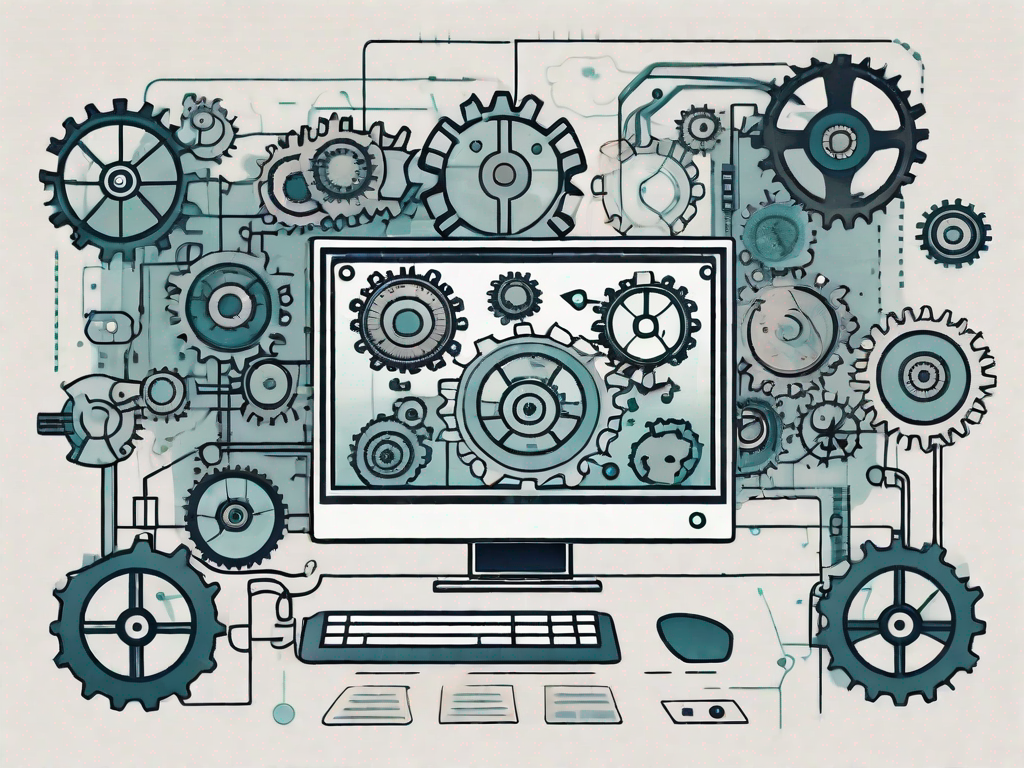What is Machine Automation?
The industrial landscape is undergoing a notable transformation, driven to a large extent by the advent and integration of automation solutions. At its core, machine automation signifies the shift from manual to automatic operations, wherein control systems like computers and robots seamlessly perform tasks traditionally executed by human operators. This paradigm amplifies efficiency and underscores the precision and consistency required in today’s fast-paced production environments.
As industries continue to evolve, the role of automation becomes ever more crucial. It’s about more than just cutting costs; it’s about enhancing capabilities across the board. Through automation, factories are witnessing significant improvements—not just in increased output but in refining processes, leading to higher product quality and decreased waste. This revolution in manufacturing practices promises a new era of industrial productivity.
How Machine Automation Works
Machine automation hinges on the intricate interplay of advanced systems that manage and control machinery and processes. Fundamentally, these systems rely on sensors for gathering critical data, actuators for controlling actions, and sophisticated software to process information and drive operations. For example, in an automated assembly line, sensors continuously track the movement and status of products. This data is then relayed to a central computer system, which makes real-time decisions and adjusts machinery settings to ensure optimal performance.
It is impossible to exaggerate how important machine learning and artificial intelligence (AI) are to the advancement of these systems. These technologies have pushed automation into new realms, enabling predictive maintenance that foresees potential machine failures before they occur. Moreover, AI’s capacity for real-time data analysis optimizes the entire operation, ensuring the machinery runs efficiently and effectively to adapt to any changes or disruptions, thus maintaining a consistent production flow.
Benefits of Machine Automation
The advantages of machine automation are manifold and impact various facets of industrial operations. Automation significantly enhances efficiency; shortening the time necessary for executing processes boosts throughput and allows businesses to meet rising customer demands with ease. For example, consider automation, such as EcoVac, which is used in food processing industries, such as for packaged fresh cut fruits and vegetables, to ensure optimal moisture levels and extended shelf life. By automating the water removal process, this helps in maintaining product quality and reduces the risk of spoilage, which leads to less waste and higher customer satisfaction. Consistency is another substantial benefit—automated systems maintain high levels of accuracy, reducing the occurrence of errors common in manual operations.
In addition to operational improvements, automation plays a crucial role in safety. It delegates dangerous or tedious tasks to machines, drastically reducing the risk of worker injuries. Consequently, this reduces related expenses and liabilities for companies. This guarantees that human workers may concentrate on jobs that call for creativity and critical thinking—tasks that are difficult for machines to mimic.
Applications Across Industries
Machine automation’s reach extends across various industries, from automotive and aerospace to food processing and pharmaceuticals. In the automotive sector, automation is indispensable, with robots taking the lead in welding, painting, and assembling cars with unprecedented precision and speed. These systems ensure that each vehicle part is handled carefully, providing consistent quality across batches.
Similarly, automated systems are pivotal in healthcare and pharmaceuticals. They ensure sterile conditions for producing medicines and medical devices and support laboratories in processing large volumes of tests with exceptional accuracy and speed. This is particularly crucial in settings where human error could have severe repercussions.
The adaptability of automation solutions means that their applications are not just vast, but also deeply customized to cater to the specific needs of each industry, overcoming unique challenges and paving the way for enhanced operational performance.
Challenges in Implementing Automation
Despite its numerous benefits, the journey to implementing machine automation is not without its hurdles. One of the primary challenges is the significant initial capital investment, which can be daunting for small to mid-sized businesses. However, the cost can lead to considerable returns, enhancing efficiency and capabilities when viewed as a long-term investment.
Restructuring existing workflows to accommodate advanced systems involves training the workforce, which can be another challenge. Employees must be upskilled to manage these sophisticated systems effectively. This shift often requires robust change management strategies emphasizing communication and continuous learning.
Moreover, the discussion around job displacement continues to spark debate. While automation can lead to a reduction in certain roles, it also creates opportunities for new positions focused on operating and maintaining these systems.
The Future of Machine Automation
The potential for machine automation is vast, especially as technology advances. The fusion of IoT with automation is expected to lead to even more intelligent networks, where machines communicate with one another, optimize operations autonomously, and predict maintenance needs in advance.
As highlighted by evolving robotics trends, the future of automation is poised to open up entirely new business models and enhance operational efficiencies further. As businesses begin to align with these emerging patterns, they can vastly improve their current operations, drive innovation, and create value in new, unforeseen ways.
Getting Started with Automation
For companies looking to integrate machine automation, embarking on this journey begins with a comprehensive assessment of current processes. Identifying repetitive, time-consuming tasks that could benefit from automation is a critical first step. By doing so, companies can prioritize their implementations strategically and effectively.
Additionally, investing in employee training and development is crucial. Exploring tools like trainual alternatives, for example, can help organizations design efficient onboarding and training processes tailored to the needs of an automated environment. Similarly, adopting platforms that support knowledge-sharing or learning management systems can empower employees to adapt quickly. By equipping teams with the skills needed to operate alongside automated systems, businesses not only ease the transition but foster an innovative workplace where machines and humans collaborate efficiently. Establishing partnerships with experienced technology providers can further ease this transition, offering insights and expertise that ensure successful integration and sustainable success.
In conclusion, businesses can
stay ahead in an increasingly competitive market by thoughtfully and incrementally adopting automation, laying the foundation for a future characterized by productivity and efficiency.




